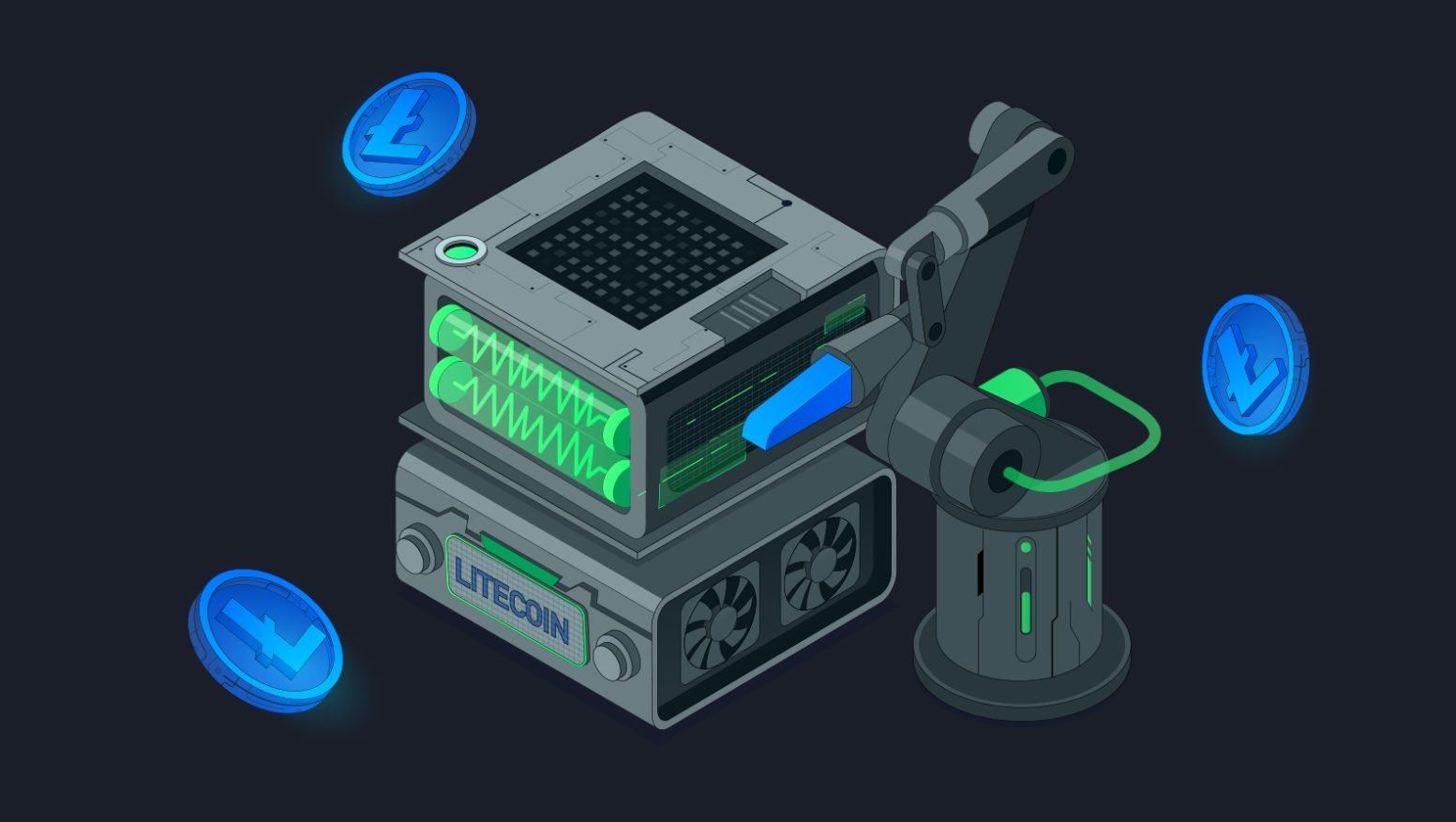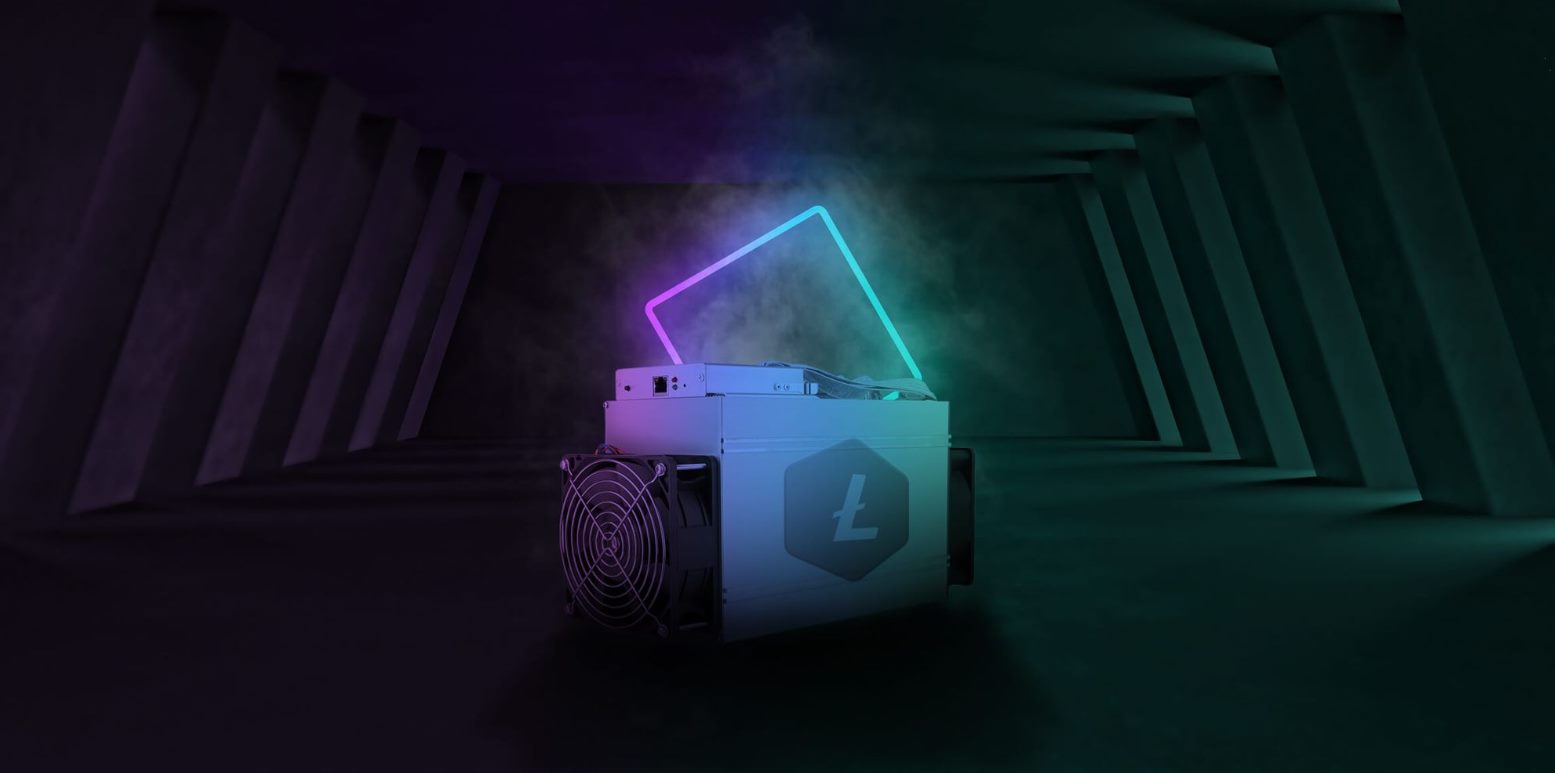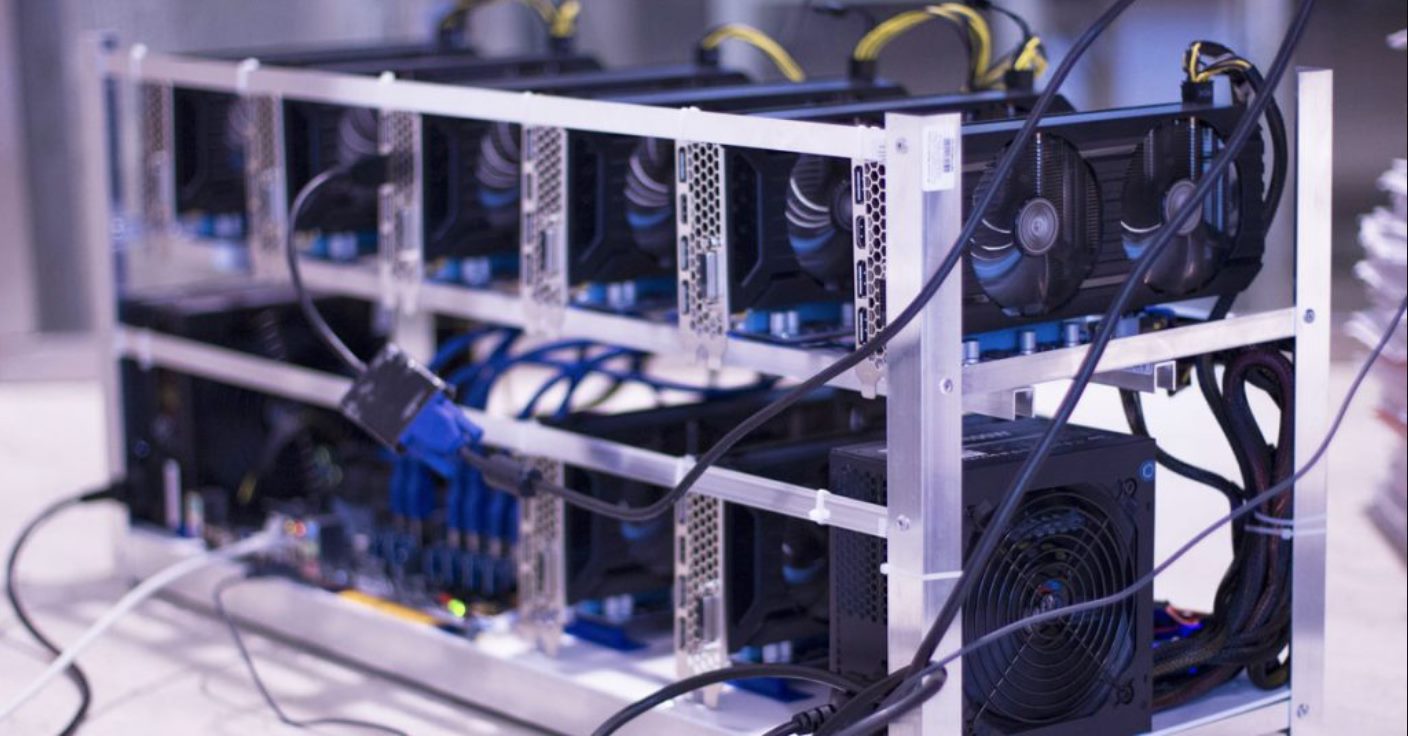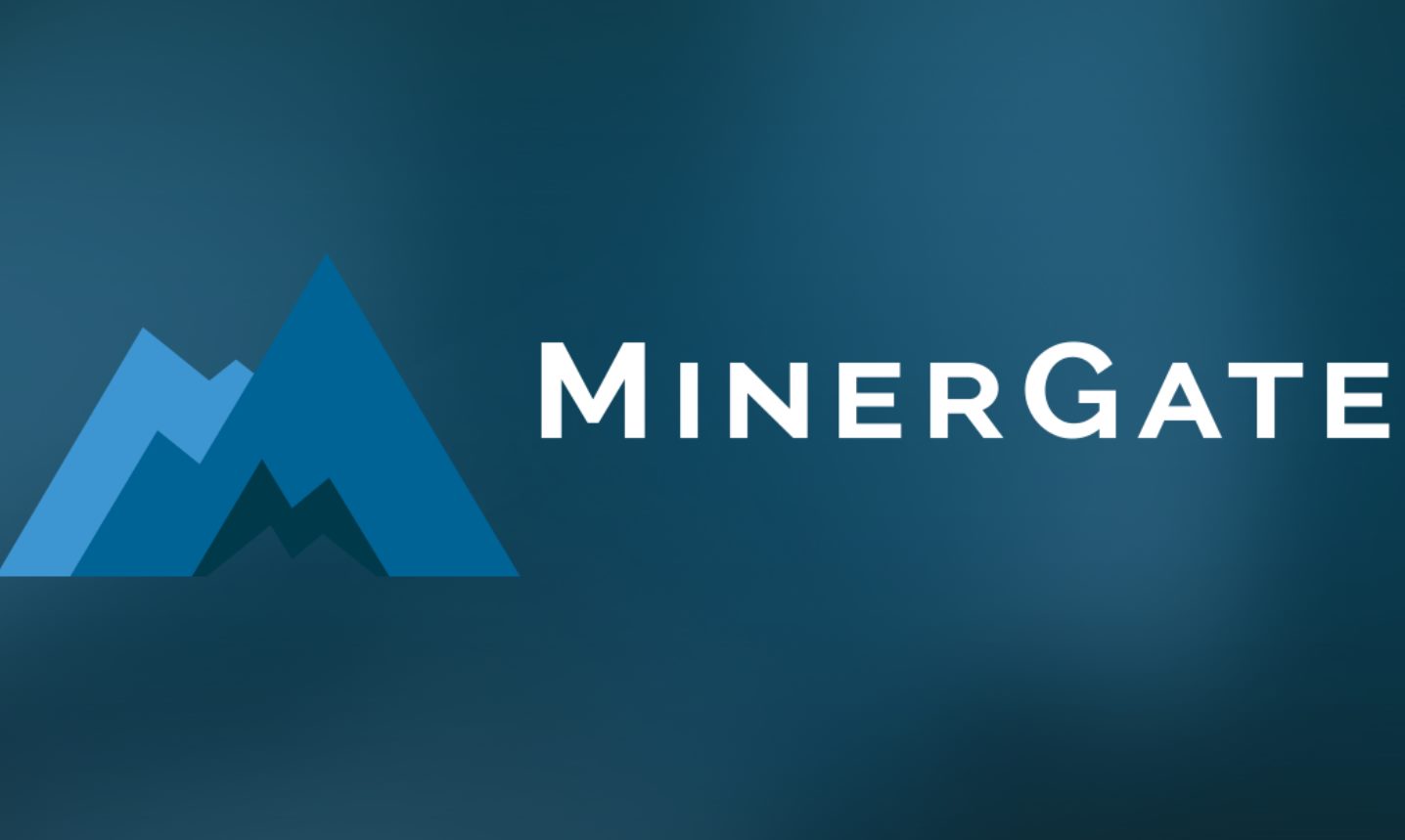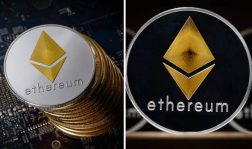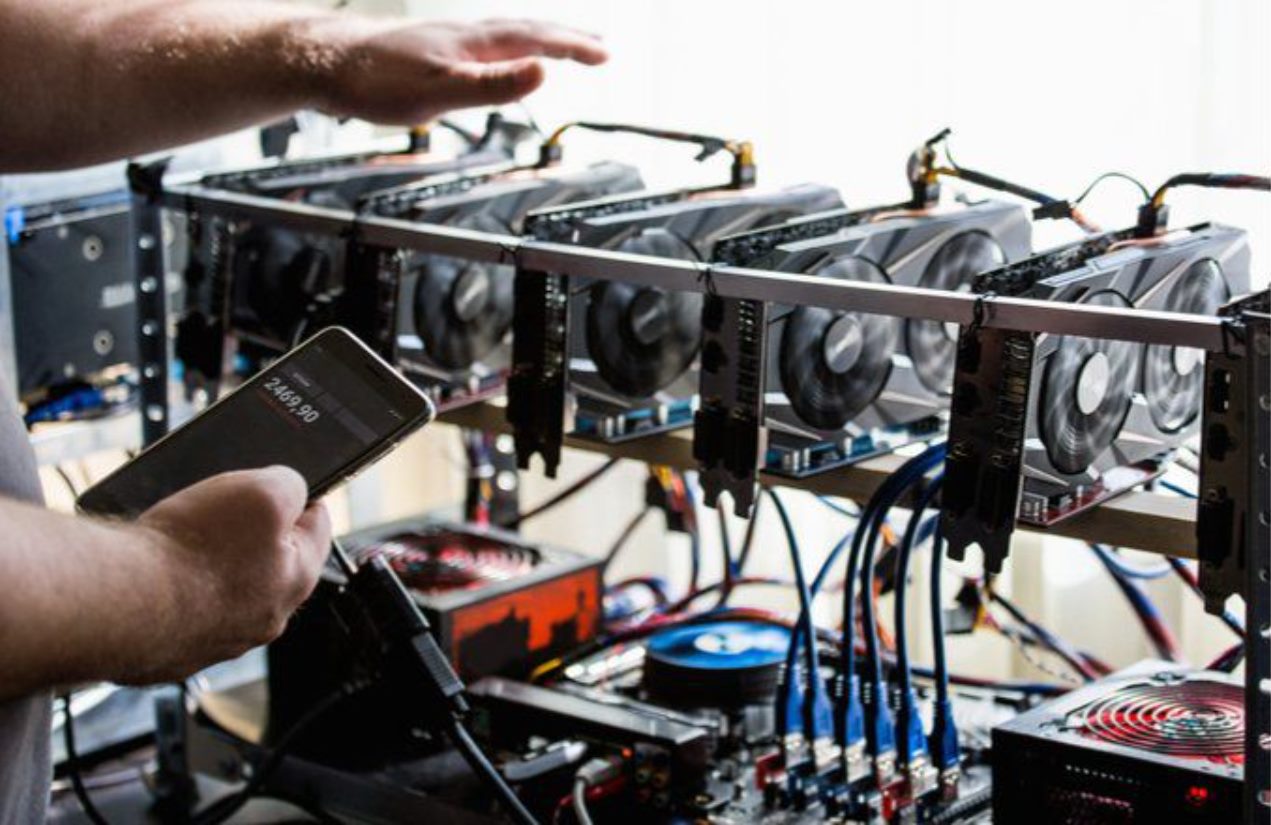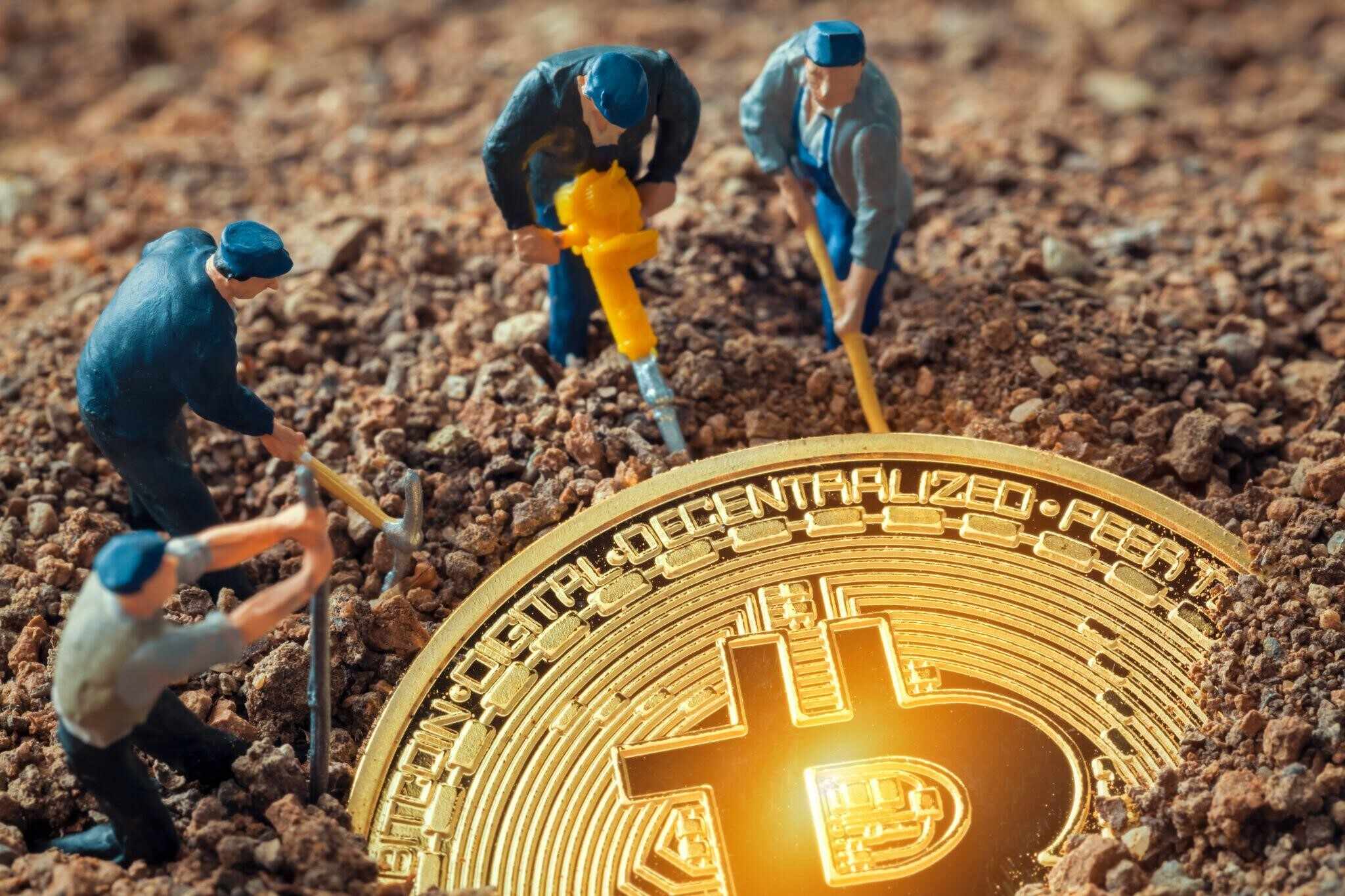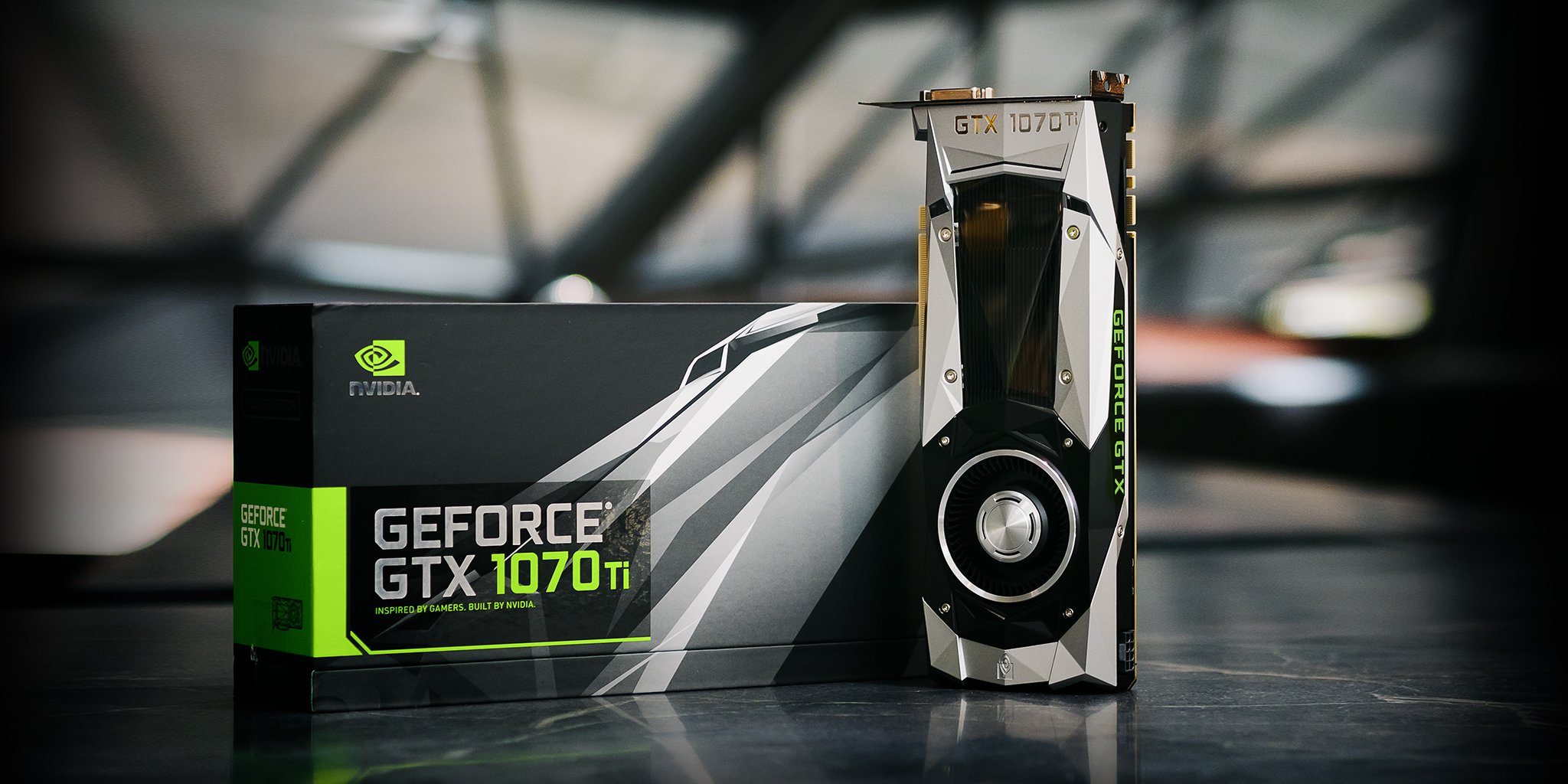Introduction
Welcome to the world of Litecoin mining! If you’re new to the concept, don’t worry – we’ve got you covered. In this guide, we’ll walk you through the process of mining Litecoin using an Nvidia GPU.
Litecoin is a form of cryptocurrency, similar to Bitcoin. It was created by Charlie Lee, a former Google engineer, in 2011. What sets Litecoin apart from Bitcoin is its mining algorithm, which makes it more accessible to regular computer users. Unlike Bitcoin, which uses SHA-256, Litecoin uses the Scrypt algorithm.
Why mine Litecoin? Well, there are a few reasons. Firstly, like its big brother Bitcoin, Litecoin can be used as a decentralized and secure method of transferring funds. It allows you to take control of your own finances, free from the constraints of banks or other intermediaries.
Secondly, mining Litecoin can be a profitable venture. By contributing your computational power to the network, you receive rewards in the form of newly minted Litecoins. The value of these Litecoins can increase over time, potentially resulting in a substantial return on your investment.
Now that you understand the basics of Litecoin mining and its potential benefits, let’s dive into the technical side. The first step is to ensure you have the right hardware for mining. Let’s explore that in the next section.
What is Litecoin Mining?
Litecoin mining is the process of validating and adding new transactions to the Litecoin blockchain. It involves solving complex mathematical puzzles using computational power, which requires specialized hardware. Miners compete to solve these puzzles, and the first miner to find a solution is rewarded with a certain amount of Litecoins.
The mining process serves two main purposes. Firstly, it secures the Litecoin network by ensuring the integrity of the transactions. Each time a block is mined, the transactions within it are verified and permanently recorded on the blockchain. This decentralized ledger is transparent and resistant to tampering.
Secondly, Litecoin mining creates new Litecoins and distributes them to miners. The mining rewards serve as an incentive for miners to participate in the network and contribute their computational resources. This process helps to maintain the stability and security of the Litecoin ecosystem.
Litecoin uses the Scrypt hashing algorithm, which differs from the SHA-256 algorithm used by Bitcoin. This algorithm is designed to be memory-intensive, which makes it more accessible to individual miners using consumer-grade hardware, such as GPUs (Graphics Processing Units).
When mining Litecoin, miners collect transactions into blocks and use their hardware to solve complex mathematical problems. These problems require significant computational power, and miners must find a hash that satisfies specific criteria. This process, known as proof-of-work, requires miners to make repetitive computations until they find a solution.
Once a miner finds a solution, they broadcast it to the network for verification. Other miners then confirm the validity of the solution and add the block to the Litecoin blockchain. The miner who successfully mines a block is rewarded with a certain number of Litecoins, along with any transaction fees associated with the transactions included in that block.
To summarize, Litecoin mining is the process of validating transactions, securing the network, and earning new Litecoins. It involves solving complex mathematical puzzles using computational power. In the next section, we’ll discuss the hardware you need to get started with Litecoin mining.
Why Mine Litecoin?
If you’re considering mining cryptocurrency, you might be wondering why you should choose Litecoin over other options. Let’s explore some compelling reasons to mine Litecoin.
Firstly, Litecoin is one of the oldest and most established cryptocurrencies in the market. Since its launch in 2011, it has gained a solid reputation and a large user base. This means that Litecoin has excellent liquidity and can be easily exchanged for other cryptocurrencies or traditional currencies, unlike some newer or less popular coins.
Secondly, Litecoin offers faster block generation times compared to Bitcoin. While Bitcoin takes around 10 minutes to generate a new block, Litecoin achieves this in approximately 2.5 minutes. This faster block generation allows for quicker transactions and confirmation times, making Litecoin more suitable for everyday transactions.
Another advantage of mining Litecoin is its scalability potential. Litecoin has a larger maximum supply cap than Bitcoin, with a total of 84 million Litecoins compared to Bitcoin’s 21 million coins. This higher supply allows for easier mining and a more accessible entry point for individual miners.
Litecoin mining also benefits from strong community support. The Litecoin community is vibrant and active, with a dedicated following of developers, miners, and enthusiasts. This support creates a robust ecosystem for the cryptocurrency, fostering innovation and growth.
Additionally, Litecoin has implemented certain features that differentiate it from Bitcoin. For example, Litecoin uses the Scrypt algorithm for mining, which requires less energy and specialized ASIC (Application-Specific Integrated Circuit) hardware compared to Bitcoin’s SHA-256 algorithm. This makes it more feasible for individual miners to participate and reduces the barrier to entry.
Finally, mining Litecoin can be a potentially profitable venture. As the value of Litecoin fluctuates, mining rewards can increase in value over time. If you believe in the long-term potential of Litecoin and its adoption as a digital currency, mining can be a way to accumulate Litecoins at a lower cost than purchasing them directly from exchanges.
To sum up, mining Litecoin offers several advantages, including its established reputation, faster transaction times, scalability potential, strong community support, and the potential for profitability. Now that you understand the benefits of Litecoin mining, let’s move on to the next section, where we’ll discuss the hardware required to start mining.
Choosing the Right Hardware
When it comes to mining Litecoin, choosing the right hardware is crucial to ensure optimal mining performance and profitability. Let’s explore the key factors to consider when selecting your mining hardware.
The most critical component for Litecoin mining is the graphics card or GPU (Graphics Processing Unit). Unlike Bitcoin, which is now predominantly mined using ASICs (Application-Specific Integrated Circuits), Litecoin mining is still viable with GPUs.
When choosing a GPU, you’ll want to consider factors such as hash rate, power consumption, and cost. The hash rate refers to the speed at which the GPU can solve the mathematical puzzles required for mining. A higher hash rate generally means more profitable mining, but it’s important to weigh the hash rate against other factors like power consumption.
Power consumption is an essential consideration, as mining can be energy-intensive. GPUs with higher hash rates typically consume more power. It’s crucial to strike a balance between hash rate and power consumption to ensure that your mining operation remains profitable and cost-effective. Consider researching and comparing the power efficiency of different GPU models before making a decision.
In addition to the GPU, you’ll need a reliable power supply unit (PSU) capable of supplying sufficient power to your mining rig. Make sure to choose a PSU with enough wattage to accommodate the power requirements of your GPU(s) and other components.
Other hardware components to consider include a motherboard, CPU (Central Processing Unit), RAM (Random Access Memory), storage (SSD or HDD), and cooling solutions. While these components are important, they don’t have as significant an impact on mining performance as the GPU.
It’s worth mentioning that some miners opt to build their own custom mining rigs using multiple GPUs for increased hash power. Building a mining rig allows for more flexibility in choosing the hardware and can potentially enhance mining performance. However, it’s important to ensure proper cooling and ventilation for the mining rig, as multiple GPUs can generate a significant amount of heat.
Once you’ve chosen the right hardware for your Litecoin mining rig, it’s time to set it up. In the next section, we’ll guide you through the process of assembling and configuring your mining rig.
Setting Up your Mining Rig
Now that you have selected the right hardware for your Litecoin mining rig, it’s time to set it up. Follow these steps to assemble and configure your mining rig effectively:
1. Prepare the mining rig frame: Start by setting up a sturdy and well-ventilated frame to hold all the components of your mining rig. Ensure that the frame provides enough space for proper airflow and cooling.
2. Install the motherboard: Attach the motherboard to the frame, ensuring that it is securely in place. Connect the power cables from the PSU to the motherboard, ensuring that the connections are properly aligned.
3. Install the CPU and RAM: Install the CPU and its accompanying cooling system onto the motherboard. Insert the RAM modules into the appropriate slots on the motherboard, making sure they are properly seated.
4. Connect storage devices: Connect the storage devices, such as SSD or HDD, to the motherboard using the appropriate cables. Install the operating system and mining software onto the storage device.
5. Install the graphics card(s): Install the GPU(s) onto the motherboard, ensuring that they are securely in their respective slots. Connect the necessary power cables from the PSU to the GPU(s).
6. Connect other peripherals: Connect any additional peripherals, such as keyboard, mouse, and monitor, to the appropriate ports on the motherboard.
7. Check connections: Double-check that all connections are secure and properly connected. Make sure that the power cables are correctly plugged in and that there are no loose connections.
8. Power on and configure: Power on the mining rig and enter the BIOS settings. Configure the BIOS to prioritize the GPU(s) as the primary graphics device. Save the changes and exit the BIOS.
9. Install the operating system and mining software: Install the desired operating system, such as Windows or Linux, onto the storage device. Once the operating system is installed, download and install the mining software of your choice.
10. Configure the mining software: Open the mining software and configure it to connect to the Litecoin network. Enter your mining pool information, such as the pool URL and your wallet address. Adjust any other settings, such as intensity levels, fan speeds, and mining algorithm, to optimize your mining performance.
By following these steps, you can effectively set up your mining rig and get ready to start mining Litecoin. In the next section, we’ll discuss the process of installing and configuring your mining software in more detail.
Installing Mining Software
Installing mining software is a crucial step in getting your mining rig up and running for Litecoin mining. Here’s a step-by-step guide on how to install mining software:
1. Choose a mining software: There are several mining software options available for Litecoin mining. Some popular choices include CGMiner, BFGMiner, and EasyMiner. Research and choose the software that best suits your needs.
2. Download the mining software: Visit the official website of your chosen mining software and download the latest version compatible with your operating system.
3. Extract the software: Once the download is complete, extract the contents of the downloaded file to a location of your choice on your computer.
4. Set up the configuration file: Mining software often requires a configuration file to define the mining parameters and connections to the mining pool. Locate the configuration file included with the mining software and open it with a text editor.
5. Configure the mining software: In the configuration file, you will need to specify your mining pool information, such as the pool URL, username, and password. Additionally, you may need to adjust other parameters, such as intensity levels and GPU settings, to optimize your mining performance.
6. Save the configuration file: After making the necessary changes in the configuration file, save it and close the text editor.
7. Run the mining software: Open the folder containing the mining software and locate the executable file. Double-click on the file to run the mining software.
8. Monitor mining progress: Once the mining software is running, it will start mining Litecoins using your configured settings. Monitor the mining progress through the software’s interface, which typically displays important information such as hash rate, accepted shares, and mining pool connection status.
9. Troubleshoot issues: If you encounter any issues during the installation or configuration process, refer to the mining software’s documentation or community forums for troubleshooting guides and solutions.
10. Update and optimize: Regularly check for updates to the mining software to ensure that you are using the latest version with improved features and bug fixes. Additionally, experiment with different mining settings and strategies to optimize your mining performance and efficiency.
By following these steps, you can successfully install mining software and configure it to mine Litecoins on your mining rig. In the next section, we’ll delve into the process of configuring your mining software for optimal performance.
Configuring your Mining Software
Configuring your mining software is an important step to ensure optimal performance and profitability while mining Litecoins. Here’s a step-by-step guide on how to configure your mining software:
1. Open the configuration file: Locate the configuration file for your mining software. It is usually a text file with a .conf or .cfg extension. Use a text editor to open the file.
2. Set up the mining pool: In the configuration file, you’ll find settings related to the mining pool. These settings include the pool URL, username, and password. Enter the correct information provided by your mining pool.
3. Adjust mining parameters: The configuration file also allows you to adjust various mining parameters. These parameters include the intensity levels, thread concurrency, and worksize. Experiment with different values to find the optimal settings for your specific hardware.
4. Enable hardware-specific optimizations: Some mining software allows you to enable hardware-specific optimizations. These optimizations are designed to take advantage of the specific capabilities of your GPU. Refer to the documentation of your mining software to learn more about hardware-specific optimizations and how to enable them.
5. Specify the GPU device: If you are mining with multiple GPUs, the configuration file will provide an option to specify the GPU device. Each GPU is assigned a unique identifier, such as “gpu0” or “gpu1.” Assign the correct identifier to each GPU in your mining rig.
6. Save the configuration file: After making the necessary changes, save the configuration file and close the text editor.
7. Run the mining software: Launch the mining software and allow it to run. It will begin mining Litecoins using the settings specified in the configuration file.
8. Monitor mining performance: Keep an eye on the mining performance metrics provided by the software. These metrics include the hash rate, accepted shares, and temperature of your GPUs. Monitoring these metrics will help you assess the efficiency and stability of your mining operation.
9. Fine-tune settings if necessary: If you notice any performance issues or instability in your mining rig, you may need to fine-tune your settings further. Experiment with different values for the mining parameters and hardware-specific optimizations to achieve the best results.
10. Regularly update your mining software: Stay up to date with the latest version of the mining software. Developers often release updates that improve stability, performance, and security. Monitor the official website or the software’s documentation for updates and install them as needed.
By following these steps, you can effectively configure your mining software for optimal performance while mining Litecoins. In the next section, we’ll discuss the importance of joining a mining pool to maximize your mining rewards.
Joining a Mining Pool
Joining a mining pool is a popular choice for Litecoin miners, as it can increase the chances of earning consistent mining rewards. In a mining pool, multiple miners combine their computational power to mine Litecoins collectively. Here’s a guide on how to join a mining pool:
1. Research and choose a mining pool: There are numerous mining pools available for Litecoin mining. Research different pools to find one that suits your needs in terms of fees, payout methods, pool size, and reputation. Popular Litecoin mining pools include Antpool, F2Pool, and Litecoinpool.org.
2. Create an account: Visit the chosen mining pool’s website and create an account. Provide the necessary information, including a username and password. Take note of your mining pool account details, as you’ll need them in the next steps.
3. Configure your mining software: Open your mining software’s configuration file and enter the mining pool’s URL, username, and password. This information allows your mining software to connect to the pool and mine Litecoins on your behalf.
4. Choose a mining server: When joining a mining pool, you’ll typically have multiple servers to choose from. Each server may be located in different regions and have different latency or connection speeds. Select the server that provides the best balance of stability and low latency for your location.
5. Set up your payout address: In your mining pool account settings, locate the section for configuring your payout address. Enter your Litecoin wallet address, which is where your mining rewards will be sent. Ensure that the address is correct to avoid any issues with receiving your rewards.
6. Monitor your mining progress: Once you’ve configured your mining software to connect to the mining pool, monitor the mining progress through the pool’s website or your mining software’s interface. You should be able to track metrics such as your hash rate, shares submitted, and your current balance.
7. Understand the payout policy: Each mining pool has its own payout policy. Some pools have a minimum payout threshold, meaning you need to accumulate a certain amount of Litecoins before they are sent to your wallet. Familiarize yourself with the pool’s payout policy to know when and how you’ll receive your mining rewards.
8. Participate in the mining pool’s community: Many mining pools have active communities where miners share tips, discuss mining strategies, and offer support. Engaging with the community can provide valuable insights and help you optimize your mining operation.
9. Consider switching pools if necessary: If you experience issues with a particular mining pool or are not satisfied with the results, you can always switch to a different pool. Evaluate your options and choose a pool that aligns with your mining goals and preferences.
By joining a mining pool, you can increase the consistency of your mining rewards and collaborate with other miners. The next section will focus on monitoring and optimizing your mining rig for enhanced performance.
Monitoring and Optimizing your Mining Rig
Monitoring and optimizing your mining rig is essential to ensure efficient operation, maximize mining productivity, and enhance profitability. Here are some steps to help you monitor and optimize your mining rig:
1. Monitor mining metrics: Keep a close eye on key mining metrics such as hash rate, accepted shares, and temperature of your GPUs. Use monitoring software or the dashboard provided by your mining pool to track and analyze these metrics in real-time.
2. Maintain proper cooling: Proper cooling is crucial to prevent overheating of your mining rig components. Ensure that your mining rig is adequately ventilated with proper airflow. Consider using additional fans or even investing in dedicated cooling solutions like liquid cooling to keep temperatures in check.
3. Optimize power consumption: Mining can consume a significant amount of electricity. Monitor your power consumption and consider implementing energy-saving measures. This can include undervolting your GPUs, using power-efficient settings in your mining software, or employing smart power management tools.
4. Update drivers and firmware: Regularly check for updates to your graphics card drivers and firmware. Updates can provide performance improvements, bug fixes, and optimizations that can enhance mining efficiency and stability.
5. Fine-tune mining software settings: Experiment with different mining software settings to find the optimal configuration for your mining rig. Adjust parameters such as GPU intensity levels, thread concurrency, and worksize to achieve the best performance and efficiency.
6. Keep hardware clean and dust-free: Dust accumulation can hinder cooling performance and potentially damage components. Regularly clean your mining rig, including fans, filters, and heat sinks, to prevent dust buildup and maintain optimal performance.
7. Backup your wallet: It is crucial to regularly back up your Litecoin wallet to avoid losing any mined Litecoins. Store the wallet backup in a secure location, preferably offline or on a separate external device. This ensures the safety of your mining rewards in case of hardware failure or data breaches.
8. Stay up to date with industry news: Stay informed about the latest developments in mining technology, software updates, and market conditions. Engage with mining communities, forums, and social media groups to gain valuable insights and tips for optimizing your mining rig.
9. Consider expanding or upgrading your rig: As the mining landscape evolves, it may be beneficial to expand or upgrade your mining rig. This could involve adding more GPUs, exploring alternative mining algorithms, or building a dedicated mining farm. Evaluate the costs and potential returns to make informed decisions.
10. Regularly evaluate your mining profitability: Monitor the profitability of your mining operation by calculating your electricity costs, mining rewards, and other associated expenses. Consider adjusting your mining strategy, such as switching to more profitable coins or adjusting your hash power, based on market trends.
By actively monitoring and optimizing your mining rig, you can ensure its stability, efficiency, and profitability. In the next section, we’ll wrap up this guide and provide a summary of key takeaways for Litecoin mining.
Conclusion
Congratulations! You have successfully learned the ins and outs of mining Litecoin using an Nvidia GPU. From understanding the concept of Litecoin mining to choosing the right hardware, configuring the mining software, joining a mining pool, and monitoring and optimizing your mining rig, you now have the knowledge to embark on your mining journey.
Mining Litecoin can be an exciting and potentially lucrative endeavor. By participating in the mining process, you contribute to the security and decentralization of the Litecoin network while having the opportunity to earn Litecoins as rewards.
Remember, the key to successful mining lies in choosing the right hardware that balances performance and power consumption, joining a reliable mining pool, and monitoring and optimizing your mining rig for optimal efficiency.
Additionally, continue to stay updated with the latest developments in the mining industry. Constantly evaluate your mining profitability and consider adjusting your mining strategy to adapt to changing market conditions.
Keep in mind that mining cryptocurrencies, including Litecoin, require careful consideration of factors such as electricity costs, hardware expenses, and market volatility. It’s important to conduct thorough research and make informed decisions to ensure a successful and profitable mining operation.
Now that you have a comprehensive understanding of Litecoin mining, it’s time to put your knowledge into practice. Set up your mining rig, join a mining pool, and start mining Litecoins. Best wishes for a successful mining journey!







